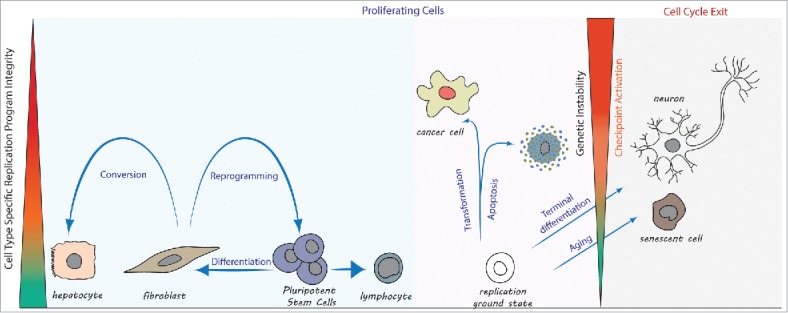Figure 1.

Cell type specific DNA replication programs limit changes in cell identity. Proliferating cells blue panel: Cell type transitions during normal development follow along cell type specific replication programs. In contrast, forced changes in cell identity during reprogramming to pluripotency (e.g. fibroblast to iPS cell) or direct conversion to another cell type (e.g., fibroblast to hepatocyte) undermine replication program integrity and activate cell cycle checkpoints. Proliferating cells pink panel: Deviation from a cell type specific replication program compatible with genetic stability (referred to as ‘replication ground state’) occurs during cell transformation. The outcome may be cell death, or genetic instability in proliferating cells. Cell cycle exit: The cell type specific replication program is compromised in a growing number of cells during aging, resulting in cellular senescence. Mature neurons lack a replication program compatible with genetic stability and permanently exit the cell cycle.
